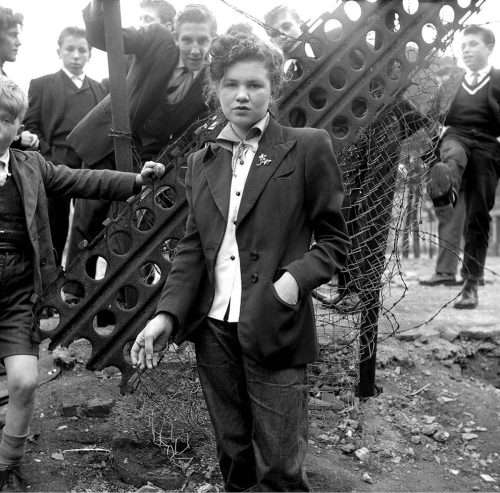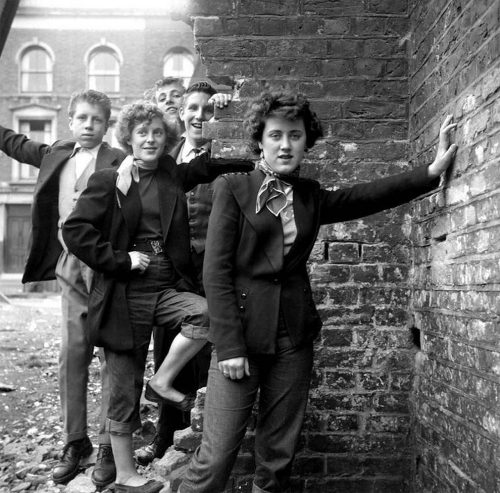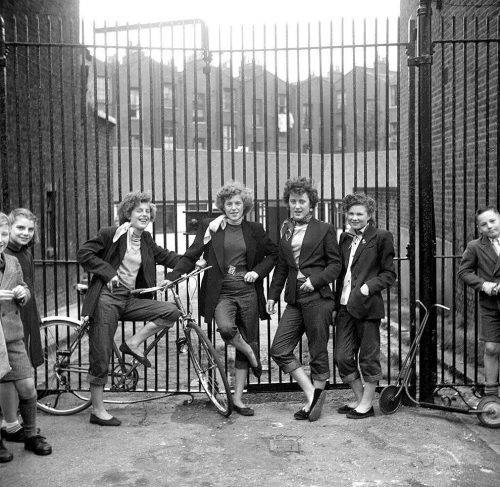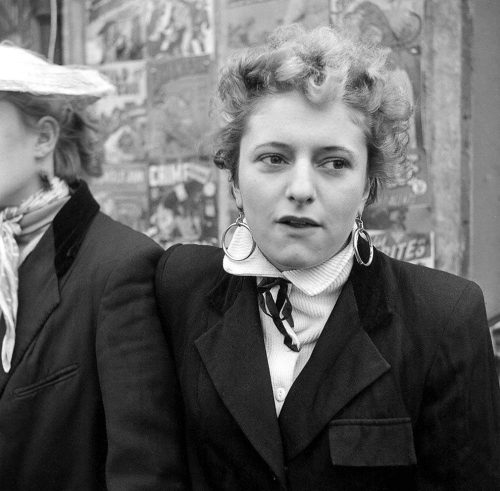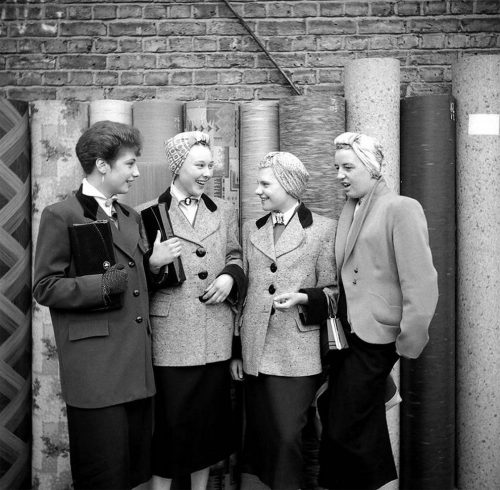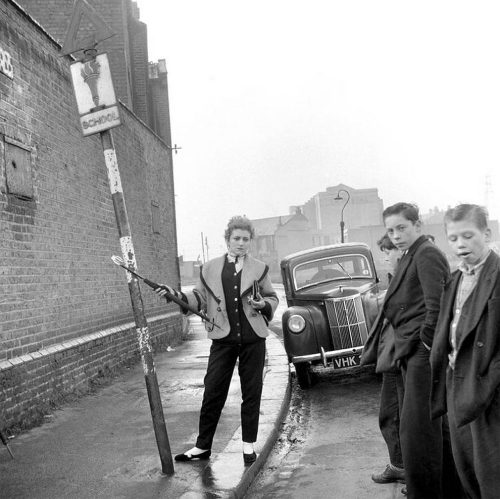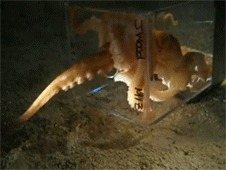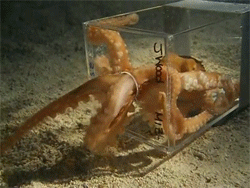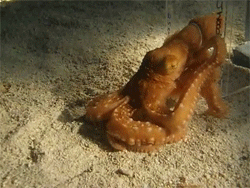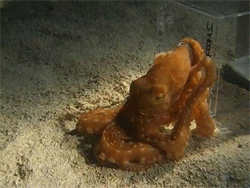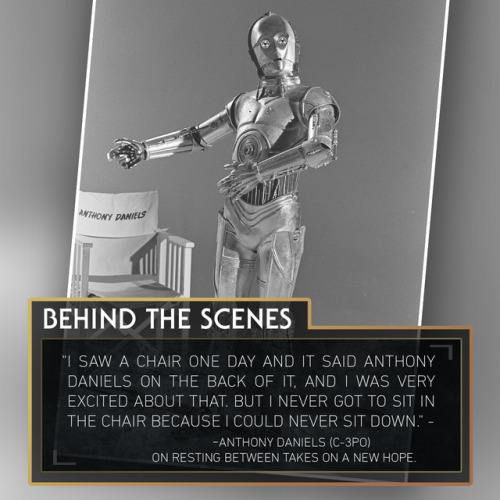A reblog of nerdy and quirky stuff that pique my interest.
291 posts
Latest Posts by philosophical-amoeba - Page 3
Chai Tea
Word for tea in most of the world’s languages are all ultimately related, belonging to two groups of terms.
“Tea” itself belongs to one of those groups. It was a borrowing from Dutch thee, in turn from tê, the reading of 茶 in the Amoy dialect of Min Nan. Those languages whose introduction to tea was primaraly from Dutch traders typically use words likewise derived via the Dutch thee. The Polish herbata is also part of this family, though slightly obscured, being a borrowing from the Latin herba thea.
The other major group is represented by the word chai, a more recent borrowing in English. Chai was borrowed from the Hindi cāy, which in turn came from a Chinese dialect with a form similar to Mandarin chá. Languages that use chai-type terms generally were first introduced to tea through overland trade, ultimately to northern China, while those that use tea-type terms were generally introduced to it via sea trade, from Southern China.
Both tê and chá are derived from the same Middle Chinese form, ultimately derived from Proto-Sino-Tibetan *s-la “leaf”.
Oval Eggs
The word egg was a borrowing from Old Norse egg, replacing the native word ey (plural eyren) from Old English ǣġ, plural ǣġru. Like “children” and “kine” (obsolete plural of cow), the plural ending -en was added redundantly to the plural form in Middle English. As with most borrowings from Old Norse, this showed up first in northern dialects of English, and gradually moved southwards, so that for a while, ey and egg were used in different parts of England.
In 1490, when William Caxton printed the first English-language books, he wrote a prologue to his publication of Eneydos (Aeneid in contemporary English) in which he discussed the problems of choosing a dialect to publish in, due to the wide variety of English dialects that existed at the time. This word was a specific example he gave. He told a story about some merchants from London travelling down the Thames and stopping in a village in Kent
And one of theym… cam in to an hows and axed for mete and specyally he axyd after eggys, and the goode wyf answerde that she could speke no Frenshe. And the marchaunt was angry, for he also coude speke no Frenshe, but wolde have hadde egges; and she understode hym not. And thenne at laste a-nother sayd that he wolde have eyren. Then the good wyf sayd that she understod hym wel. Loo, what sholde a man in thyse dayes now wryte, egges, or eyren? Certaynly it is hard to playse every man, by-cause of dyversite and chaunge of langage.
The merchant in this story was only familiar with the word egg, while the woman only knew ey, and the confusion was only resolved by someone who knew both words. Indeed, the woman in the story was so confused by this unfamiliar word egg that she assumed it must be a French word! The word “meat” (or “mete” as Caxton spelled it) was a generic word for “food” at the time.
The word ey may also survive in the term Cockney, thought to derive from the Middle English cocken ey (”cock’s egg”), a term given to a small misshapen egg, and applied by rural people to townspeople
Both egg and ey derived from the same Proto-Germanic root, *ajją, which apparently had a variant *ajjaz in West Germanic. This Proto-Germanic form in turn derived from Proto-Indo-European *h2ōwyóm. In Latin, this root became ōvum, from which the adjective ōvalis meaning “egg-shaped”, was derived. Ōvum itself was borrowed into English in the biological sense of the larger gamete in animals, while ōvalis is the source of oval.
The PIE root is generally though to derive from the root *h2éwis, “bird”, which is the source of Latin avis “bird”, source of English terms such as aviation. This word may also be related to *h2ówis “sheep”, which survived in English as ewe. One theory is that they were both derived from a root meaning something like “to dress”, “to clothe”, with bird meaning “one who is clothed [in feathers]” and sheep meaning “one who clothes [by producing wool]”.










Le festival Sōma-shi 相馬市 - préfecture de Fukushima-ken 福島県.
La région de Sōma est réputée pour ses chevaux. Tous les ans, du 22 au 25 juillet, s'y déroule le Sōma nomaoi 相馬野馬追, littéralement : “chasse aux chevaux sauvages de Sōma” autour des sanctuaires Ōta jinja 太田神社 et Odaka jinja 小高神社 à Minamisōma-shi 南相馬市, et du sanctuaire Nakamura jinja 中村神社 à Sōma. Durant 3 jours, les anciens cavaliers samouraïs sont mis à l’honneur lors de différentes démonstrations, parades de samouraïs, courses de chevaux, reconstitutions de batailles et processions.



MALANG, INDONESIA
Kampung Warna-Warni (Village of Color)
This Indonesian village was revitalized by a vibrant rainbow paint job.
South of the city center in Malang, Indonesia, rows upon rows of monotonous white houses with brown roofs suddenly transform into a rainbow of vibrant colors bursting at every corner. What was formerly an impoverished village was transformed into an oasis of color and art, a project that has delighted visitors and revitalized the local community.
The village of Kampung Warna-Warni (Indonesian for “Village of Color”) was once drab and polluted, lacking the economic resources required to build a healthy community. But eight event management students from a nearby university lent a helping hand by applying their class skills to the real world. The students partnered with a local paint company looking to do a social responsibility project, which donated over 6,000 pounds of colorful paint, and voila, a hueless city got a brilliant new paint job.
Inspired by the favelas of Rio, every square inch of the rainbow village is coated in color, ranging from pastels of green and orange to pink and yellow. The bridge nearby the village is also painted, its beams erupting in magnificent blues and purples.
Although it may seem like the paint job would benefit visitors more than those actually living in the village, the makeover has revitalized the community. The beautiful colors improved the village’s standard of living by drawing in new tourist dollars, and the beauty of the colorful houses has inspired many community members to improve the sanitation of their river.
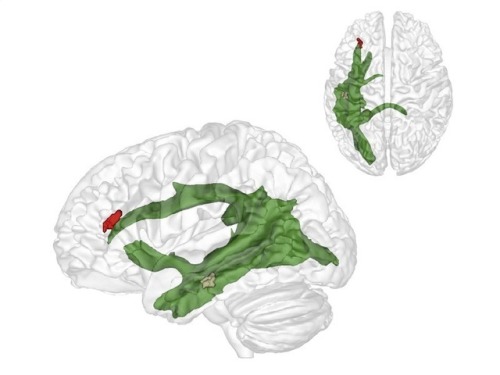
(Image caption: The maturation of fibres of a brain structure called the arcuate fascicle (green) between the ages of three and four years establishes a connection between two critical brain regions: a region (brown) at the back of the temporal lobe that supports adults thinking about others and their thoughts, and a region (red) in the frontal lobe that is involved in keeping things at different levels of abstraction and, therefore, helps us to understand what the real world is and what the thoughts of others are. Credit: © MPI CBS)
The importance of relating to others: why we only learn to understand other people after the age of four
When we are around four years old we suddenly start to understand that other people think and that their view of the world is often different from our own. Researchers in Leiden and Leipzig have explored how that works. Publication in Nature Communications on 21 March.
At around the age of four we suddenly do what three-year-olds are unable to do: put ourselves in someone else’s shoes. Researchers at the Max Planck Institute for Human Cognitive and Brain Sciences (MPI CBS) in Leipzig and at Leiden University have shown how this enormous developmental step occurs: a critical fibre connection in the brain matures. Senior researcher and Leiden developmental psychologist Nikolaus Steinbeis, co-author of the article, took part in the research. Lead author, PhD candidate Charlotte Grosse-Wiesmann, worked under his supervision.
Little Maxi
If you tell a 3-year-old child the following story of little Maxi, they will most probably not understand: Maxi puts his chocolate on the kitchen table, then goes to play outside. While he is gone, his mother puts the chocolate in the cupboard. Where will Maxi look for his chocolate when he comes back? A 3-year-old child will not understand why Maxi would be surprised not to find the chocolate on the table where he left it. It is only by the age of 4 years that a child will correctly predict that Maxi will look for his chocolate where he left it and not in the cupboard where it is now.
Theory of Mind
The researchers observed something similar when they showed a 3-year-old child a chocolate box that contained pencils instead of chocolates. When the child was asked what another child would expect to be in the box, they answered “pencils”, although the other child would not know this. Only a year later, around the age of four years, however, will they understand that the other child had hoped for chocolates. Thus, there is a crucial developmental breakthrough between three and four years: this is when we start to attribute thoughts and beliefs to others and to understand that their beliefs can be different from ours. Before that age, thoughts don’t seem to exist independently of what we see and know about the world. That is, this is when we develop a Theory of Mind.
Independent development
The researchers have now discovered what is behind this breakthrough. The maturation of fibres of a brain structure called the arcuate fascicle between the ages of three and four years establishes a connection between two critical brain regions: a region at the back of the temporal lobe that supports adult thinking about others and their thoughts, and a region in the frontal lobe that is involved in keeping things at different levels of abstraction and, therefore, helps us to understand what the real world is and what the thoughts of others are. Only when these two brain regions are connected through the arcuate fascicle can children start to understand what other people think. This is what allows us to predict where Maxi will look for his chocolate. Interestingly, this new connection in the brain supports this ability independently of other cognitive abilities, such as intelligence, language ability or impulse control.






How Tattooing Really Works
1. Tattooing causes a wound that alerts the body to begin the inflammatory process, calling immune system cells to the wound site to begin repairing the skin. Specialized cells called macrophages eat the invading material (ink) in an attempt to clean up the inflammatory mess.
2. As these cells travel through the lymphatic system, some of them are carried back with a belly full of dye into the lymph nodes while others remain in the dermis. With no way to dispose of the pigment, the dyes inside them remain visible through the skin.
3. Some of the ink particles are also suspended in the gel-like matrix of the dermis, while others are engulfed by dermal cells called fibroblasts. Initially, ink is deposited into the epidermis as well, but as the skin heals, the damaged epidermal cells are shed and replaced by new, dye-free cells with the topmost layer peeling off like a healing sunburn.
4. Dermal cells, however, remain in place until they die. When they do, they are taken up, ink and all, by younger cells nearby so the ink stays where it is.
5. So a single tattoo may not truly last forever, but tattoos have been around longer than any existing culture. And their continuing popularity means that the art of tattooing is here to stay.
From the TED-Ed Lesson What makes tattoos permanent? - Claudia Aguirre
Animation by TOGETHER

Liu Chuyu was the first-born daughter of Emperor Xiaowu and his empress, during the Liu Song dynasty. Never heard of it? Neither had I. Lasting just 60 years in the 400s CE, it was one of the four southern kingdoms which succeeded the Eastern Jin Empire. While it was going, the Liu Song dynasty ruled most of southern China, but a string of incompetent or tyrannical emperors led to internal instability and the dynasty’s quick downfall.
Luckily for her, Liu Chuyu was born during a relatively stable period. Her father became Emperor Xiaowu by force, but his reign was more or less stable, and he died of natural causes when she was 17 or 18. The transition of power was bloodless and his son, Liu Chuyu’s younger brother, followed Emperor Xiaowu upon the throne.
Before he died, her father married her to He Ji, son of a prominent official. Liu Chuyu doesn’t seem to have been so happy about this. History records that when her brother left the palace she would often go to see him. One of those visits, Liu Chuyu said to him “While our genders are different, we are born of the same father. However, you have more than 10,000 women in your palaces, and I only have one husband, and this is unfair.” In response, her younger brother selected 30 young handsome men for her to keep. (Doesn’t it sound weird when put like that?) Liu Chuyu … enjoyed… them for a year before her brother was assassinated. Her uncle took the throne, denounced Liu Chuyu for her immorality, and ordered her to commit suicide. No more male harems for princesses.



When We Were Very Young A A Milne decorations by Ernest H Shepherd London Methuen & Co Ltd. Thirty Second Edition 1941 (Cheap Form) [First Published 1924]
The 38th poem in the book, “Teddy Bear”, that originally appeared in Punch magazine in February 1924, was the first appearance of the famous character Winnie-the-Pooh.

Man with quadriplegia employs injury bridging technologies to move again—just by thinking
First recipient of implanted brain-recording and muscle-stimulating systems reanimates limb that had been stilled for eight years
Bill Kochevar grabbed a mug of water, drew it to his lips and drank through the straw.
His motions were slow and deliberate, but then Kochevar hadn’t moved his right arm or hand for eight years.
And it took some practice to reach and grasp just by thinking about it.
Kochevar, who was paralyzed below his shoulders in a bicycling accident, is believed to be the first person with quadriplegia in the world to have arm and hand movements restored with the help of two temporarily implanted technologies.
A brain-computer interface with recording electrodes under his skull, and a functional electrical stimulation (FES) system* activating his arm and hand, reconnect his brain to paralyzed muscles.
Holding a makeshift handle pierced through a dry sponge, Kochevar scratched the side of his nose with the sponge. He scooped forkfuls of mashed potatoes from a bowl—perhaps his top goal—and savored each mouthful.
“For somebody who’s been injured eight years and couldn’t move, being able to move just that little bit is awesome to me,” said Kochevar, 56, of Cleveland. “It’s better than I thought it would be.”
Kochevar is the focal point of research led by Case Western Reserve University, the Cleveland Functional Electrical Stimulation (FES) Center at the Louis Stokes Cleveland VA Medical Center and University Hospitals Cleveland Medical Center (UH). A study of the work was published in the The Lancet March 28 at 6:30 p.m. U.S. Eastern time.
“He’s really breaking ground for the spinal cord injury community,” said Bob Kirsch, chair of Case Western Reserve’s Department of Biomedical Engineering, executive director of the FES Center and principal investigator (PI) and senior author of the research. “This is a major step toward restoring some independence.”
When asked, people with quadriplegia say their first priority is to scratch an itch, feed themselves or perform other simple functions with their arm and hand, instead of relying on caregivers.
“By taking the brain signals generated when Bill attempts to move, and using them to control the stimulation of his arm and hand, he was able to perform personal functions that were important to him,” said Bolu Ajiboye, assistant professor of biomedical engineering and lead study author.
Technology and training
The research with Kochevar is part of the ongoing BrainGate2* pilot clinical trial being conducted by a consortium of academic and VA institutions assessing the safety and feasibility of the implanted brain-computer interface (BCI) system in people with paralysis. Other investigational BrainGate research has shown that people with paralysis can control a cursor on a computer screen or a robotic arm (braingate.org).
“Every day, most of us take for granted that when we will to move, we can move any part of our body with precision and control in multiple directions and those with traumatic spinal cord injury or any other form of paralysis cannot,” said Benjamin Walter, associate professor of neurology at Case Western Reserve School of Medicine, clinical PI of the Cleveland BrainGate2 trial and medical director of the Deep Brain Stimulation Program at UH Cleveland Medical Center.
“The ultimate hope of any of these individuals is to restore this function,” Walter said. “By restoring the communication of the will to move from the brain directly to the body this work will hopefully begin to restore the hope of millions of paralyzed individuals that someday they will be able to move freely again.”
Jonathan Miller, assistant professor of neurosurgery at Case Western Reserve School of Medicine and director of the Functional and Restorative Neurosurgery Center at UH, led a team of surgeons who implanted two 96-channel electrode arrays—each about the size of a baby aspirin—in Kochevar’s motor cortex, on the surface of the brain.
The arrays record brain signals created when Kochevar imagines movement of his own arm and hand. The brain-computer interface extracts information from the brain signals about what movements he intends to make, then passes the information to command the electrical stimulation system.
To prepare him to use his arm again, Kochevar first learned how to use his brain signals to move a virtual-reality arm on a computer screen.
“He was able to do it within a few minutes,” Kirsch said. “The code was still in his brain.”
As Kochevar’s ability to move the virtual arm improved through four months of training, the researchers believed he would be capable of controlling his own arm and hand.
Miller then led a team that implanted the FES systems’ 36 electrodes that animate muscles in the upper and lower arm.
The BCI decodes the recorded brain signals into the intended movement command, which is then converted by the FES system into patterns of electrical pulses.
The pulses sent through the FES electrodes trigger the muscles controlling Kochevar’s hand, wrist, arm, elbow and shoulder. To overcome gravity that would otherwise prevent him from raising his arm and reaching, Kochevar uses a mobile arm support, which is also under his brain’s control.
New Capabilities
Eight years of muscle atrophy required rehabilitation. The researchers exercised Kochevar’s arm and hand with cyclical electrical stimulation patterns. Over 45 weeks, his strength, range of motion and endurance improved. As he practiced movements, the researchers adjusted stimulation patterns to further his abilities.
Kochevar can make each joint in his right arm move individually. Or, just by thinking about a task such as feeding himself or getting a drink, the muscles are activated in a coordinated fashion.
When asked to describe how he commanded the arm movements, Kochevar told investigators, “I’m making it move without having to really concentrate hard at it…I just think ‘out’…and it goes.”
Kocehvar is fitted with temporarily implanted FES technology that has a track record of reliable use in people. The BCI and FES system together represent early feasibility that gives the research team insights into the potential future benefit of the combined system.
Advances needed to make the combined technology usable outside of a lab are not far from reality, the researchers say. Work is underway to make the brain implant wireless, and the investigators are improving decoding and stimulation patterns needed to make movements more precise. Fully implantable FES systems have already been developed and are also being tested in separate clinical research.
Kochevar welcomes new technology—even if it requires more surgery—that will enable him to move better. “This won’t replace caregivers,” he said. “But, in the long term, people will be able, in a limited way, to do more for themselves.”
The investigational BrainGate technology was initially developed in the Brown University laboratory of John Donoghue, now the founding director of the Wyss Center for Bio and Neuroengineering in Geneva, Switzerland. The implanted recording electrodes are known as the Utah array, originally designed by Richard Normann, Emeritus Distinguished Professor of Bioengineering at the University of Utah.
The report in Lancet is the result of a long-running collaboration between Kirsch, Ajiboye and the multi-institutional BrainGate consortium. Leigh Hochberg, a neurologist and neuroengineer at Massachusetts General Hospital, Brown University and the VA RR&D Center for Neurorestoration and Neurotechnology in Providence, Rhode Island, directs the pilot clinical trial of the BrainGate system and is a study co-author.
“It’s been so inspiring to watch Mr. Kochevar move his own arm and hand just by thinking about it,” Hochberg said. “As an extraordinary participant in this research, he’s teaching us how to design a new generation of neurotechnologies that we all hope will one day restore mobility and independence for people with paralysis.”
A whole lot of books

In 1610, after successfully rebuilding, reopening and firmly establishing the Bodleian Library, Sir Thomas Bodley made it his new goal to ensure the library’s long-term relevance. He forged an agreement with the Stationers’ Company that saw his library receive one copy of everything printed under royal license. This would guarantee that the Bodleian would continue to be at the cutting edge of literature and librarianship.
And this was when the Bodleian became, by effect, the first Legal Deposit library in the UK. From 1662, the notions were solidified and the Royal Library and the University Library of Cambridge were also party to the same privileges. Until the establishment of the British Library in 1753, the university libraries of Oxford and Cambridge - especially the Bodleian Library, which had enjoyed the legal deposit privilege the longest – served as the de facto national libraries of the United Kingdom.
But what’s the current state of Legal Deposit at the Bodleian? And, as @LowlandsLady asked us on Twitter, might it ever feel like a curse to have this multitude of books rolling into the library?
There’s nobody better to answer these questions than Jackie Raw, Head of Legal Deposit Operations in our Collections Management department. From this point on, this Tumblr post belongs to Jackie.
The Legal Deposit Libraries Act 2003 obliges publishers to deposit, at their own cost, one copy of every printed publication that is published or distributed in the UK with the British Library and, upon request, with up to five other Legal Deposit Libraries of which the Bodleian is one.
These Legal Deposit Libraries seek to ensure that the UK published output is preserved for posterity. To do this the requesting libraries together use the Agency for the Legal Deposit Libraries. The Agency makes claims for titles on our behalf and, on receipt, these are recorded and distributed weekly to the libraries. By collaborating the Legal Deposit Libraries seek to develop and co-ordinate national coverage and preservation of, and access to, publications acquired by legal deposit.

A random selection of books arriving by Legal Deposit.
While the Legal Deposit system has existed in various forms since 1662, the reformed Act in 2003 extended the provision for printed material to cover non-print works. This brings new and emerging publishing media under its scope. The Regulations for this came into force in April 2013. We now have the opportunity to add e-books, e-journals, digital maps and digital music scores to our collections and to harvest and archive content from UK-published material on UK websites under the new legislation.
Again the libraries are working together to ensure coverage. The benefits of holding a collection of over 12 million physical items, much of which has been deposited under Legal Deposit, and a growing digital collection cannot be overstated.

A recent count of books arriving daily at the Bodleian Libraries.
Legal Deposit ensures the nation’s heritage is collected systematically and preserved for posterity. It supports and advances the teaching and research activities of the University of Oxford and national and international scholarship more widely by collecting, recording and making available this material and it provides, in a cost-effective way, access to a wide range of publications many of which are unlikely to be found outside of the Legal Deposit system.
However, it is also a responsibility.
Clearly there can be pressures on space, storage and transportation. There are staff levels and processing costs to consider and issues around funding limitations. On the other hand there is provision within the Act to allow libraries, other than the British Library, to be selective in what we acquire. So, by consulting and collaborating we aim to ensure as complete coverage as possible within resourcing limits without overburdening any one library with the rate at which our collections are growing.


It’s easy: Form a triangle, then a hexagon, then a bicycle wheel
This is the general mechanism on how a spider spins its web (talk about engineering, right?). When an insect gets caught in its web, the vibrations caused by the insect is felt by the spider which then rushes to engulf its prey.
Now here is the trippy part ; This is the effect of drugs on the pattern of the web.


Hope you are having a great week. Have a good one!
* Spider spinning a web (video) (if you find a better full video let us know)
** Spiders on drugs - NASA article ; Video

Kilroy Was Here!
He’s engraved in stone in the National World War II Memorial in Washington, DC – back in a small alcove where very few people have seen it. For the WWII generation, this will bring back memories. For younger folks, it’s a bit of trivia that is an intrinsic part of American history and legend.
Anyone born between 1913 to about 1950, is very familiar with Kilroy. No one knew why he was so well known….but everybody seemed to get into it. It was the fad of its time!

At the National World War II Memorial in Washington, DC
So who was Kilroy?
In 1946 the American Transit Association, through its radio program, “Speak to America,” sponsored a nationwide contest to find the real Kilroy….now a larger-than-life legend of just-ended World War II….offering a prize of a real trolley car to the person who could prove himself to be the genuine article.

Almost 40 men stepped forward to make that claim, but only James Kilroy from Halifax, Massachusetts, had credible and verifiable evidence of his identity.
“Kilroy” was a 46-year old shipyard worker during World War II (1941-1945) who worked as a quality assurance checker at the Fore River Shipyard in Quincy, Massachusetts (a major shipbuilder for the United States Navy for a century until the 1980s).
His job was to go around and check on the number of rivets completed. (Rivets held ships together before the advent of modern welding techniques.) Riveters were on piece work wages….so they got paid by the rivet. He would count a block of rivets and put a check mark in semi-waxed lumber chalk (similar to crayon), so the rivets wouldn’t be counted more than once.

A warship hull with rivets
When Kilroy went off duty, the riveters would surreptitiously erase the mark. Later, an off-shift inspector would come through and count the rivets a second time, resulting in double pay for the riveters!
One day Kilroy’s boss called him into his office. The foreman was upset about unusually high wages being “earned” by riveters, and asked him to investigate. It was then he realized what had been going on.
The tight spaces he had to crawl in to check the rivets didn’t lend themselves to lugging around a paint can and brush, so Kilroy decided to stick with the waxy chalk. He continued to put his check mark on each job he inspected, but added ”KILROY WAS HERE!“ in king-sized letters next to the check….and eventually added the sketch of the guy with the long nose peering over the fence….and that became part of the Kilroy message.

Kilroy’s original shipyard inspection “trademark” during World War II
Once he did that, the riveters stopped trying to wipe away his marks.
Ordinarily the rivets and chalk marks would have been covered up with paint. With World War II on in full swing, however, ships were leaving the Quincy Yard so fast that there wasn’t time to paint them. As a result, Kilroy’s inspection “trademark” was seen by thousands of servicemen who boarded the troopships the yard produced.
His message apparently rang a bell with the servicemen, because they picked it up and spread it all over the European and the Pacific war zones.

Before war’s end, “Kilroy” had been here, there, and everywhere on the long hauls to Berlin and Tokyo.
To the troops outbound in those ships, however, he was a complete mystery; all they knew for sure was that someone named Kilroy had “been there first.” As a joke, U.S. servicemen began placing the graffiti wherever they landed, claiming it was already there when they arrived.

As the World War II wore on, the legend grew. Underwater demolition teams routinely sneaked ashore on Japanese-held islands in the Pacific to map the terrain for coming invasions by U.S. troops (and thus, presumably, were the first GI’s there). On one occasion, however, they reported seeing enemy troops painting over the Kilroy logo!
Kilroy became the U.S. super-GI who had always “already been” wherever GIs went. It became a challenge to place the logo in the most unlikely places imaginable. (It is said to now be atop Mt. Everest, the Statue of Liberty, the underside of the Arc de Triomphe in Paris, and even scrawled in the dust on the moon by the American astronauts who walked there between 1969 and 1972.

In 1945, as World War II was ending, an outhouse was built for the exclusive use of Allied leaders Harry Truman, Joseph Stalin, and Winston Churchill at the Potsdam Conference. It’s first occupant was Stalin, who emerged and asked his aide (in Russian), “Who is Kilroy?”
To help prove his authenticity in 1946, James Kilroy brought along officials from the shipyard and some of the riveters. He won the trolley car….which he attached to the Kilroy home and used to provide living quarters for six of the family’s nine children….thereby solving what had become an acute housing crisis for the Kilroys.

The new addition to the Kilroy family home.
* * * *
And the tradition continues into the 21st century…

In 2011 outside the now-late-Osama Bin Laden’s hideaway house in Abbottabad, Pakistan….shortly after the al-Qaida-terrorist was killed by U.S. Navy SEALs.
>>Note: The Kilroy graffiti on the southwest wall of the Bin Laden compound pictured above was real (not digitally altered with Microsoft Paint, as postulated by some). The entire compound was leveled in 2012 for redevelopment by a Pakistani company as an amusement park….and to avoid it becoming a shrine to Bin Laden’s nefarious memory.
* * * *
A personal note….
My Dad’s trademark signature on cards, letters and notes to my sisters and I for the first 50 or so years of our lives (until we lost him to cancer) was to add the image of “Kilroy” at the end. We kids never ceased to get a thrill out of this….even as we evolved into adulthood.
To this day, the “Kilroy” image brings back a vivid image of my awesome Dad into my head….and my heart!
Dad: This one’s for you!


Ottoman Empire and Edo-era Japan. You probably never thought about them together before, right? Turns out the Ottomans knew about Japan since at least the late 1600s, because the Ottoman scholar Katip Çelebi included Japan in his atlas “Displaying the World.”
He didn’t quite get the shape of the islands, or their number, or their names…but hey, he tried!

The hairstyle of this small girl, cut short and topped with a ribbon bow, seems to date this advertisement from the early 1950s. The printer is believed to be Whitcombe & Tombs, because the poster came to the Library with other material printed by that company.
[Whitcombe & Tombs Ltd?] :Goodness! that’s tempting. Weet-bix [ca 1954?]
Eph-C-FOOD-Whitcombe-2-03

Southeast Asia before ASEAN: An ASEAN 50 Commemorative Post
Ironically, the region of Southeast Asia was not an Asian concept. It was a Western one. It was perceived primarily through Western eyes as maps were created during the colonial rush to Asia from the 16th to the early 20th century. Hence, it originated as a geographical concept, having been rendered in different words by Western scholarship, especially before the Second World War– words such as “south east Asia”, “southeast Asia” or “south-east Asia.” In the 1930s for example, Southeast Asia was referred to as “Further India” (as if to allude that it’s near the Bay of Bengal, when it is not) or “Asia of the Monsoons” (to refer to the typhoons that frequently ravage the area.” The regional name’s gradual standardization (no longer in the lowercase “southeast”) and the dropping of the hyphen resulted in the name “Southeast Asia.” It was first used and asserted by the Americans, with its U.S. State Department’s “division of Southeast Asian Affairs” and came to be used frequently by the media as the Second World War sparked in the Pacific in 1941.
After the war, the term “Southeast Asia” transformed from a geographic entity to be referred to, to a complex and inchoate group of nations trying to redefine themselves in the world. As each one dropped their colonial fetters and became independent–Indonesia from the Dutch (17 August 1945), Vietnam from the British (2 September 1945), the Philippines from the United States (4 July 1946), Myanmar from the British (4 January 1948), Laos (22 October 1953) and Cambodia (9 November 1953) from the French, Singapore and Malaysia from the British (16 September 1956), Brunei from the British (1 January 1984), with Thailand successfully retaining its sovereignty, each one has tried to redefine their identities apart from their colonial past. With ideological conflicts in parts of Asia, a Southeast Asian integration seems far off.

*Front page of the Southeast Asia Collective Defense Treaty, 8 September 1954, from the Archives New Zealand. The first attempt at a Southeast Asian cooperation was done in 1954. The United States initiated an alliance that was meant to contain Communism in Asia, and hence, on 8 September 1954, the Southeast Asia Collective Defense Treaty (or the Manila Pact) was signed by only two Southeast Asian countries–the Philippines and Thailand–and joined by the United States, France, Great Britain, New Zealand, Australia, Thailand, and Pakistan. This established the Southeast Asian Treaty Organization or SEATO, where all member countries agree that if any one of them were attacked, all the other member countries would come to its defense–very similar to the North Atlantic Treaty Organization (NATO). But SEATO would end as a failure, for the simple reason that it was seen suspiciously by the rest of Southeast Asia as “a fig leaf for the nakedness of American policy.” Pakistan withdrew in 1972, and France in 1975.

*Philippine President Macapagal, Indonesian President Sukarno and Malaysian Prime Minister Tunku Abdul Rahman signing agreements forming the MaPhiLindo on 5 August 1963 at the Juan Luna Hall of the Department of Foreign Affairs in Manila, from the Malacañang Presidential Museum and Library.

*The Philippine Commonwealth Government-in-Exile proposed a union with Indonesia in 1943, a Pan-Malayan principle reflected in this part of an American 1942 map entitled “Outline of the Post-War New World Map,” a proposed political boundary map at the event that the Allied forces would win World War II. The one marked in blue are the proposed American protectorates of the post-war world.
At almost the same time, another effort was put in at the time of President Diosdado Macapagal. Coming from our commonality as Malays (with the vision of the late President Manuel L. Quezon for a Pan-Malayan nationhood), President Macapagal envisioned a cooperation with other Malay countries. Hence, Macapagal convened a summit in Manila, together with Malaysian Prime Minister Tunku Abdul Rahman and Indonesian President Sukarno, where they signed the Manila Accord on 5 August 1963, addressing controversial issues over North Borneo and Sarawak joining the Federation of Malaysia. The Accord established the Maphilindo, striving for “Asian solutions by Asian nations for Asian problems.” However, this was also seen as a move by the Philippines and Indonesia to stall or halt the formation of the Federation of Malaysia, which eventually happened on 16 September 1963. Indonesia pulled out of the organization, in reaction to Malaysia’s formation which was seen by Indonesia as a threat to its sovereignty, hence the org’s dissolution.

*The five “Founding Fathers” of the ASEAN, signing the Bangkok Declaration, also known as the ASEAN Declaration, on 8 August 1967. From the ASEAN Archive.
This explains the tensed environment that the five Foreign Ministers of Southeast Asia found themselves in on 8 August 1967 in the Thai Department of Foreign Affairs in Bangkok, Thailand. Carefully, and diplomatically, these representatives from Indonesia (Adam Malik), Malaysia (Tun Abdul Razak), Singapore (S. Rajaratnam), Philippines (Narciso Ramos) and Thailand (Thanat Khoman), sat down together, chose their words carefully, patiently wrestled on their issues through dialogue, and bravely met on common ground. It entailed a larger vision, one that did not only concern each of their nation’s concerns, but one that gave space to regional unity in spite of their differences. Rajaratnam said to his counterparts on that day:
We must think not only of our national interests but posit them against regional interests: that is a new way of thinking about our problems. And these are two different things and sometimes they can conflict. Secondly, we must also accept the fact, if we are really serious about it, that regional existence means painful adjustments to those practices and thinking in our respective countries. We must make these painful and difficult adjustments. If we are not going to do that, then regionalism remains a utopia.
“Painful adjustments” indeed. After all was said and done, the five Foreign Ministers, representing their heads of state, after months of negotiations and compromise, finally and unequivocally signed the two-page ASEAN Declaration, establishing the Association of Southeast Asian Nations, and committing themselves to resolving disputes by peaceful means and through hard but committed mutual accommodation. Bereft of the colonial baggages of the previous southeast asian intergovernmental organizations, it was Southeast Asian, from the inception of the idea to its founding.
The founding of the ASEAN in 1967 led to the diplomatic reconciliation between Malaysia and Indonesia, and Malaysia and Singapore. And while a year later, Malaysia temporarily severed its diplomatic relations with the Philippines due to claims over Sabah, this kind of issues never impeded the commitment the two nations have in ASEAN, so was with the other member-states with similar problems. Since then, ASEAN has grown into a 10-member-state organization. This probably explains why ASEAN is “the most successful inter-governmental organization in the developing world today.”
In the occasion of the Philippine Chairmanship of the ASEAN and its 50th founding anniversary, Happy ASEAN 50th!

*Banner from ASEAN 50 Facebook.
*Post-script: The deafening silence of the Philippines with its unprecedented win in the arbitration ruling in the ASEAN meetings ought to make people question our foreign policy. Insisting on our sovereign rights over our EEZ does not mean war-mongering. Vietnam, on the other hand, the nation that defeated the United States in the Vietnam War, still insists the rule of law thus challenging Chinese encroachment diplomatically. It exemplifies a fair and “independent foreign policy.” The Philippines should follow Vietnam’s example.
*Map above: “South-east Asia” map made by Polish Army Topography Service as featured in Pergamon World Atlas in 1967, the year ASEAN was founded. From the David Rumsey Historical Map Collection.
Follow me on Facebook at facebook.com/indiohistorian



Superfluid Helium
It was previously thought that superfluid Helium would flow continuously without losing kinetic energy. Mathematicians at Newcastle University demonstrated that this is only the case on a surface completely smooth down to the scale of nanometers; and no surface is that smooth.
When a regular fluid like water is passing over a surface, friction creates a boundary layer that ‘sticks’ to surfaces. Just like a regular fluid, when superfluid Helium passes over a rough surface there is a boundary layer created. However the cause is very different. As superfluid Helium flows past a rough surface, mini tornados are created which tangle up and stick together creating a slow-moving boundary layer between the free-moving fluid and the surface. This lack of viscosity is one of the key features that define what a superfluid is and now we know why it still loses kinetic energy when passing over a rough surface.
Now we can use this information to help our efforts on applications of superfluids in precision measurement devices such as gyroscopes (I think this was on the Big Bang theory where they make a gyroscope using superfluid Helium that can maintain angular momentum indefinitely because it would flow across a smooth surface without losing kinetic energy) and as coolants.

In slow motion, vortex rings can be truly stunning. This video shows two bubble rings underwater as they interact with one another. Upon approach, the two low-pressure vortex cores link up in what’s known as vortex reconnection. Note how the vortex rings split and reconnect in two places – not one. According to Helmholtz’s second theorem a vortex cannot end in a fluid–it must form a closed path (or end at a boundary); that’s why both sides come apart and together this way. After reconnection, waves ripple back and forth along the distorted vortex ring; these are known as Kelvin waves. Some of those perturbations bring two sides of the enlarged vortex ring too close to one another, causing a second vortex reconnection, which pinches off a smaller vortex ring. (Image source: A. Lawrence; submitted by Kam-Yung Soh)
Note: As with many viral images, locating a true source for this video is difficult. So far the closest to an original source I’ve found is the Instagram post linked above. If you know the original source, please let me know so that I can update the credit accordingly. Thanks!

Science Fact Friday: Tetrodotoxin, ft. a small gif because I’m avoiding my real obligations. Why does tetrodotoxin not affect its host? More studies need to be done but at least a few species possess mutated sodium ion channels. The tetrodotoxin can’t interact efficiently with the altered channels.
Another interesting tidbit: Animals with tetrodotoxin can lose their toxicity in captivity. It is suspected that the animals accumulate the toxic bacteria as a side-effect of their diet. After several years of captivity on a tetrodotoxin-bacteria-free diet, the bacterial colonies living in the animals die, residual toxin is cleared from the system, and the animal is safe to handle.
First genetic proof that women were Viking warriors

New DNA evidence uncovered by researchers at Uppsala University and Stockholm University shows that there were in fact female Viking warriors. The remains of an iconic Swedish Viking Age grave now reveal that war was not an activity exclusive to males – women could be found in the higher ranks at the battlefield.
The study was conducted on one of the most well-known graves from the Viking Age, a mid-10th century grave in Swedish Viking town Birka. The burial was excavated in the 1880s, revealing remains of a warrior surrounded by weapons, including a sword, armour-piercing arrows, and two horses. There was also a full set of gaming pieces and a gaming board.
The morphology of some skeletal traits have long suggested that she was a woman, but since this grave has been the type specimen for a Viking warrior for over a century, it has always been assumed to have belonged to a male Viking. Now, geneticists, archaeogeneticists and archaeologists have worked together and solved the mystery. DNA retrieved from the skeleton demonstrates that the individual carried two X chromosomes and no Y chromosome. Read more.
Do you any tips about using ms paint?
I think I have few tips
#1Use 500x500 px or bigger canvas size. Any smaller size will make a brush look messy and shit.Here look:


Can you see the difference?? Lineart in 600x600 px is so much smoother
#2

#3

#4 RIGHT MOUSE BUTTON YOU NEED IT

#5


*:・゚✧it’s like manga : *✧・゚
that’s all tbh
i hope this was somewhat helpful




The Origin of Species by Means of Natural Selection or the Preservation of Favoured Races in the struggle for life Charles Darwin
London John Murray Sixth Edition with additions and corrections (Forty Third Thousand) The sixth edition [shown here] (first printed in 1872) - is the edition in which the word “evolution” was used for the first time (although Darwin used this term in the Descent of Man, published a year before; in 1871). This edition was also the last that Charles Darwin revised during his lifetime, including the addition of an entirely new chapter. In 1876 Darwin added a few small corrections, and all subsequent printing were copies of that printing.
a clean tight fresh presentable copy - which remains largely unread - even after 124 years - a large portion of the book remains unopened [the leaves of the book remain joined at the folds; not slit apart]






